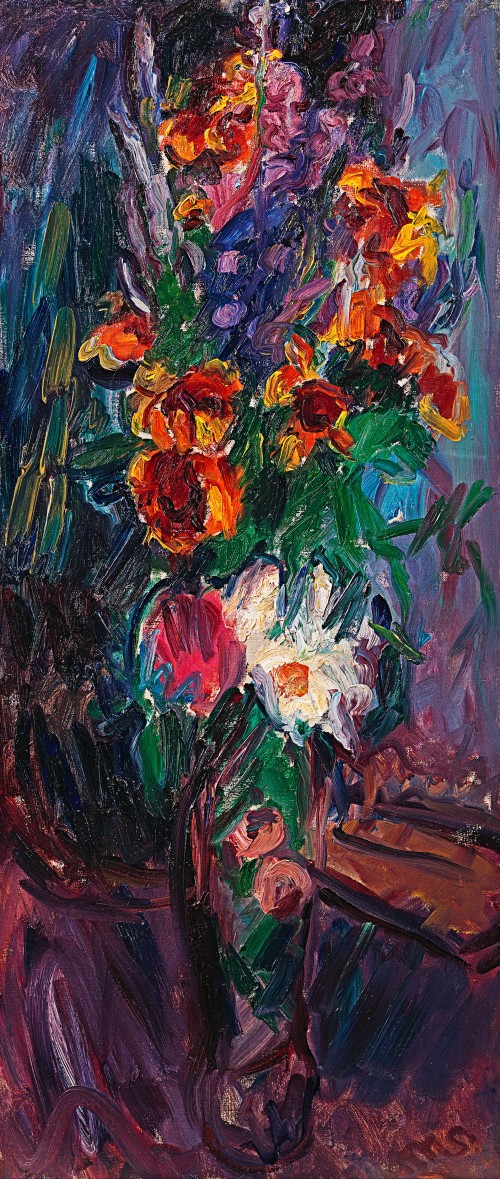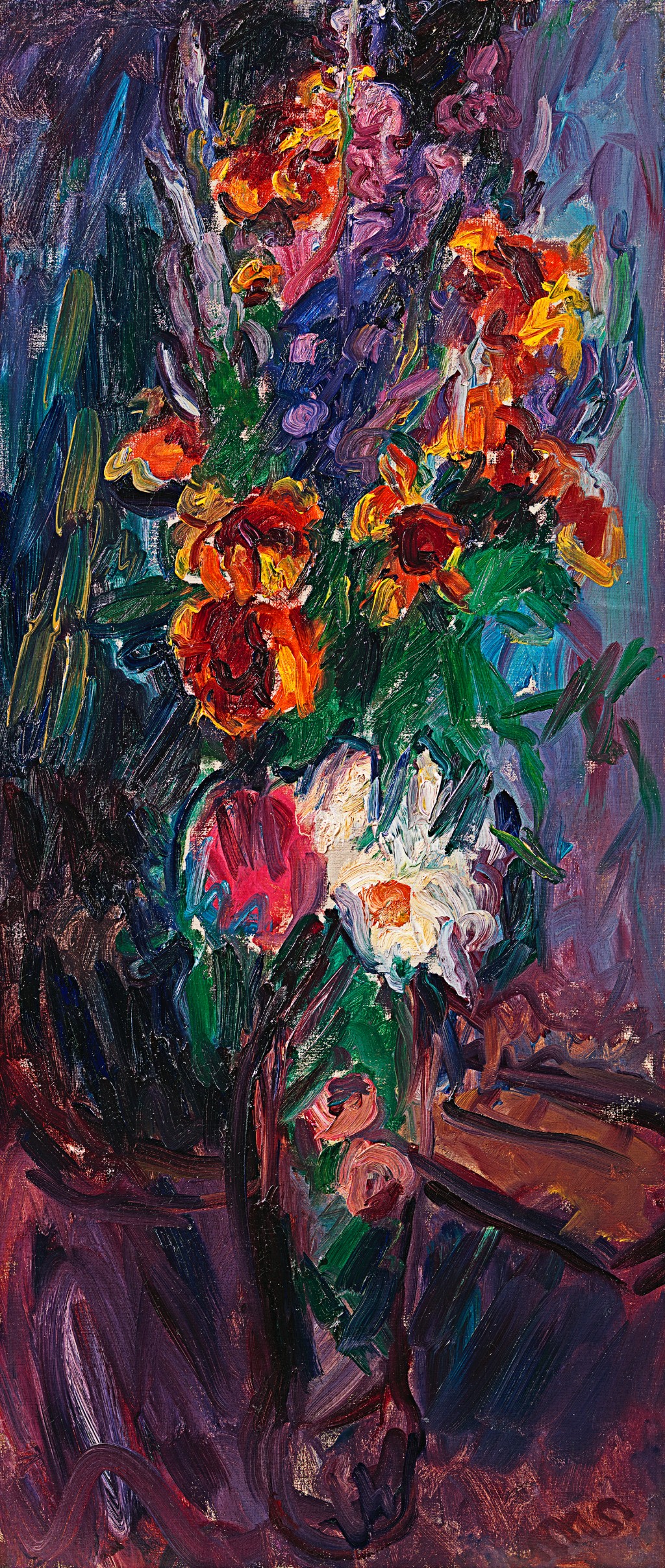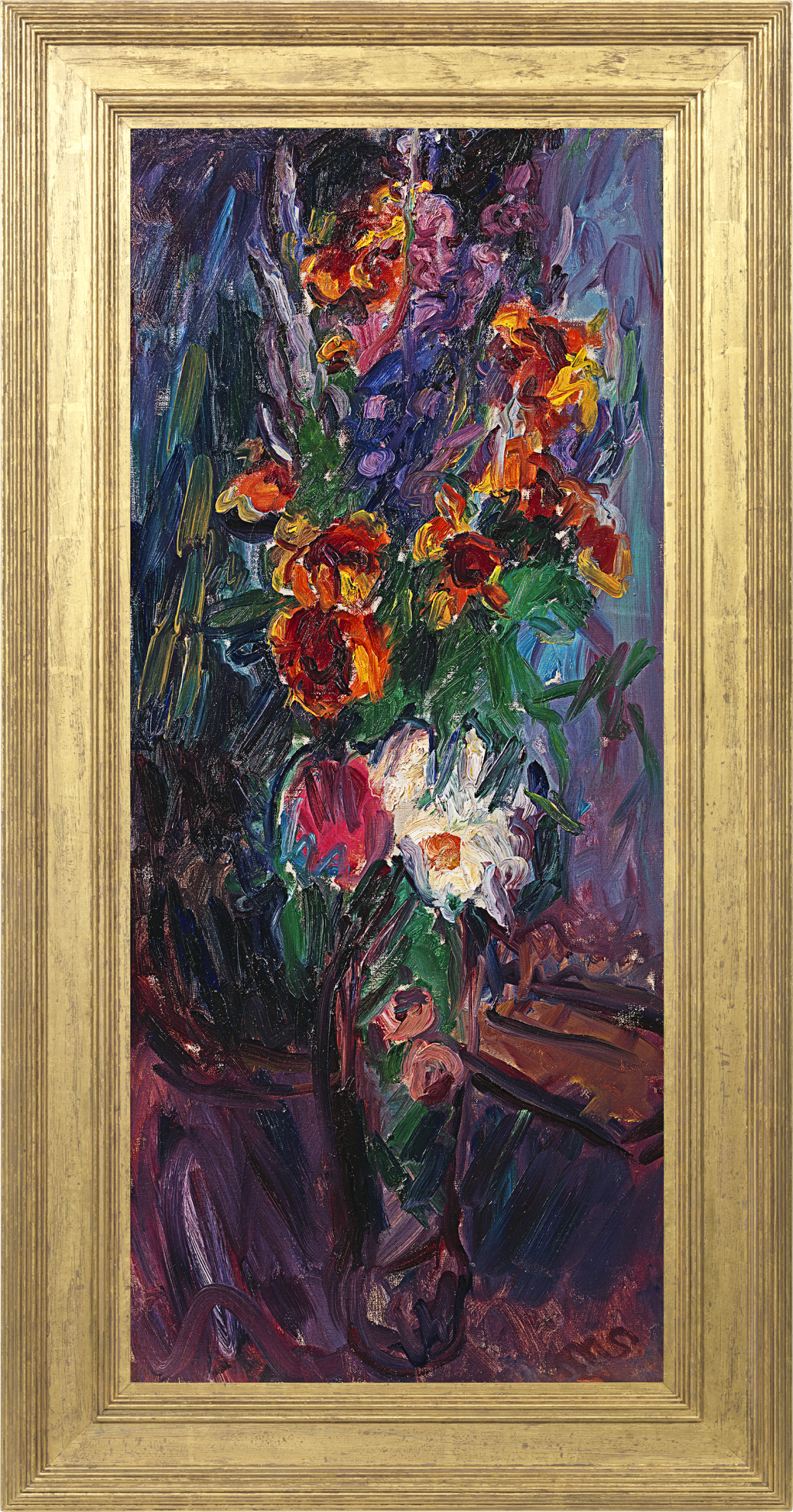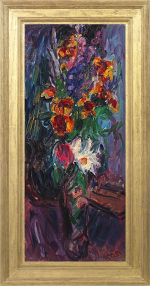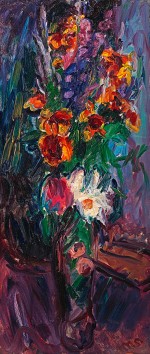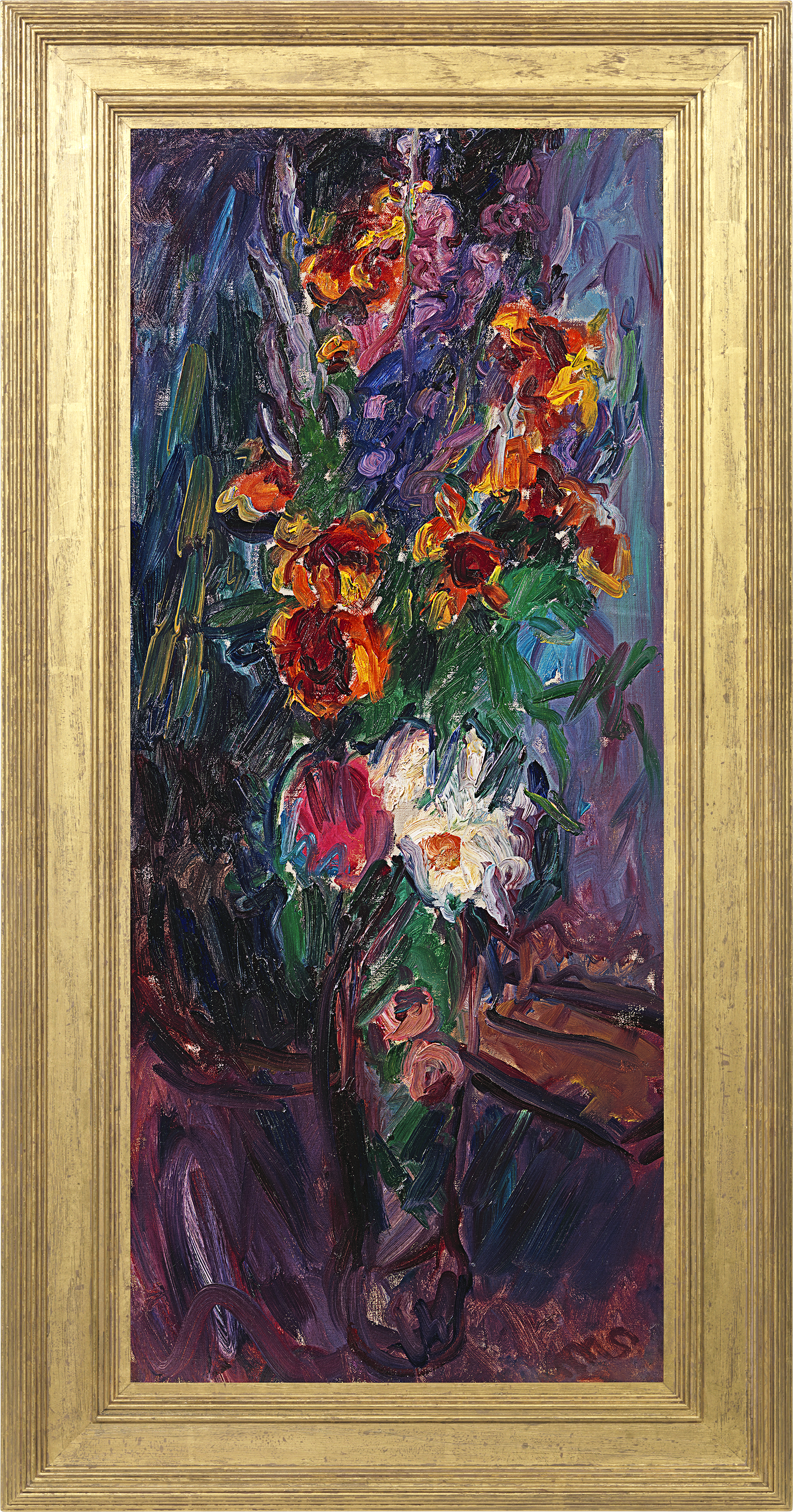SIR MATTHEW SMITH CBE
Halifax 1879 - 1959 London
Ref: CC 137
Mixed flowers in a vase
Signed with initials lower right: MS
Oil on canvas: 28 x 12 in / 71.1 x 30.5 cm
Frame size: 33 ¼ x 17 ¼ in / 84.5 x 43.8 cm
Painted circa 1933
Provenance:
Arthur Tooth & Son;
Mrs Watson-Hughes, purchased from the above 4th December 1933
Duncan Miller, London;
Peter Barkworth (1929-2006), Hampstead, then by descent to David Wyn Jones (1952-2023), Folkestone, then by family descent
Literature:
John Gledhill, Matthew Smith: Catalogue Raisonné of the Oil Paintings, Lund Humphries, Farnham 2009 no.762, illus. p.273
Almost certainly painted in France in 1933, Mixed flowers in a vase shows a desire to experiment with its unusually long and narrow format canvas. Smith didn’t prepare his own canvasses, but almost invariably worked on artist colourmen’s ready-made ones, preferring the best quality linen supports. Whenever he was in France, he would stock up with quantities of canvasses of various proportions, rarely using the same dimensions twice. This work was painted at a highly productive period for Smith who was spending much of his time in France producing landscapes, nudes and still lifes. He had an established outlet for his work through his dealer, Arthur Tooth, who was giving the artist biennial solo shows. It is a settled period of confidence, growing fame and critical acclaim. Having established his own working idiom and premier coup method, he was enjoying great freedom of execution through this period. This painting exemplifies a particular freedom of facture in the slashed brush marks laid in very rapidly so that the paint and the form described are unified.
Francis Bacon had a genuine regard for Smith’s work and saw him as a painter of true conviction. In his tribute to Smith, published in the catalogue of Smith’s exhibition at the Tate Gallery in 1953, Bacon states; ‘He seems to me to be one of the very few English painters since Constable and Turner to be concerned with painting - that is, with attempting to make idea and technique inseparable. Painting in this sense tends towards a complete interlocking of image and paint, so that the image is the paint and vice versa. Here the brush-stroke creates the form and does not merely fill it in. Consequently, every movement of the brush on the canvas alters the shape and implications of the image...I think that painting to-day is pure intuition and luck and taking advantage of what happens when you splash the stuff down, and in this game of chance Matthew Smith seems to have the gods on his side.’[1]
Mrs Watson-Hughes, the original owner of this work was acquiring modern English and Impressionist paintings through the 1930s, primarily from the Bond Street dealer, Arthur Tooth & Sons. She had a discerning eye and also owned a fine watercolour by Jacob Epstein and an oil painting by Alfred Sisley among others.
John Gledhill, author of Matthew Smith: Catalogue Raisonné of the Oil Paintings (2009)
[1] Francis Bacon, ‘Matthew Smith – A Painter’s Tribute’, Matthew Smith: Paintings from 1909 to 1952, exh. cat., Tate Gallery, London 1953, p.12.

